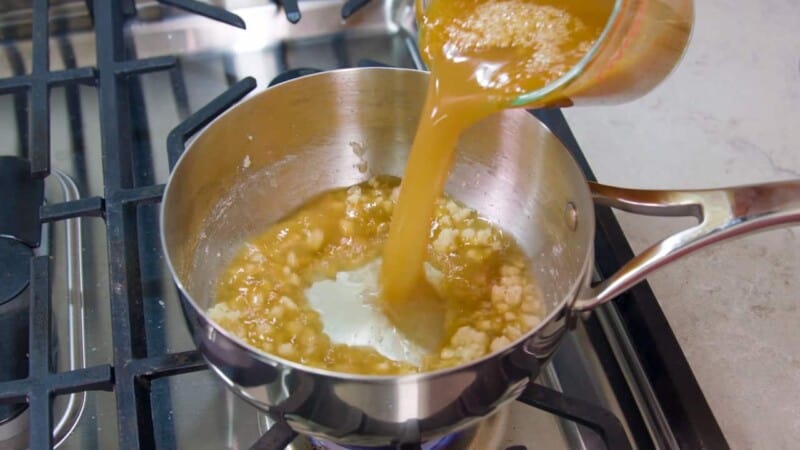Making homemade gravy is an important kitchen skill for any home cook. You can easily and quickly whip up a homemade gravy to accompany any meal. Make gravy for mashed potatoes, turkey, and pot roast, or whip up some simple sausage gravy to serve over biscuits or toast.
Use our recipe for the juiciest turkey ever for pan drippings to use for gravy.
Why Our Recipe
- Printable recipe that includes detailed instructions for making any kind of gravy.
- Use pan drippings or broths or stocks to make turkey gravy, chicken gravy, beef gravy, vegetarian gravy, and gluten-free gravy.
- A video demonstration if you need a visual reference.

Roux
Traditional gravy starts with a roux. A roux is a 1:2 mixture of fat to all-purpose flour. The fat used in gravy making is usually butter, although other fats like oils, margarine, and even bacon fat can also be used. The fat is melted and combined over heat and cooked briefly. Next, a liquid is slowly added and brought to a simmer. This liquid can be pan drippings from a roast, canned broth, or stock, or even milk. The roux will cause the liquid to thicken, creating gravy.
Using Pan Drippings
Pan drippings are a flavorful option for making homemade gravy from scratch. In order to use the pan drippings you’ll need to carefully remove them from the hot pan and strain off any fat or gristle. The easiest way to do this is to pour the liquid through a fine mesh strainer into a glass liquid measuring cup so you can easily see how much dripping liquid you have.
MAKING GRAVY DIRECTLY IN A ROASTING PAN: You can also thicken your pan drippings using a cornstarch slurry directly in your roasting pan rather than using the traditional gravy-making method. This works well when there are a lot of pan drippings from a roast and the gravy is made while the pan drippings are still very hot, straight from the oven. Skim off any fat or gristle, then spoon out 1/4 cup of the pan drippings into a small bowl. Whisk in 2 tablespoons of cornstarch (for approximately 2 cups of drippings), and then pour this slurry back into the pan. Whisk well until gravy thickens.

Gluten-Free Gravy
A traditional gravy is made using a 1:2 ratio of fat to flour. You can make your gravy gluten-free by replacing all-purpose flour with cornstarch. Cornstarch is a more powerful thickening agent so only half of the amount is needed. For example, in a recipe calling for 1/4 cup of flour, you’d replace it with 2 tablespoons of cornstarch.
Milk Gravy
Milk rather than broth is used to make creamy gravies like sausage gravy or a simple white gravy for drizzling over fried pork chops or chicken fried steak. You can also add milk to any meat-based gravy for a creamy variation. Simply replace part of the liquid called for in the gravy recipe with milk.
Storage and Reheating Instructions
Refrigerate leftover gravy in an airtight container for up to 3 to 4 days.
Reheat gravy in a saucepan over medium-low heat or microwave on high in 30-second increments until hot, stirring in between for even heating.
Watch the video below where Rachel will walk you through every step of this recipe. Sometimes it helps to have a visual, and we’ve always got you covered with our cooking show. You can find the complete collection of recipes on YouTube, Facebook Watch, or our Facebook Page, or right here on our website with their corresponding recipes.





I am sure you’ve heard this many times, but your recipes are right on the mark for any kind of cook. They are so welcome and should be a gift to every new homemaker..
What is chocolate gravy? Where do you use it?
You are my “go to” when I need a recipe! You are amazing! Thank you so much for ALL your recipes and help!